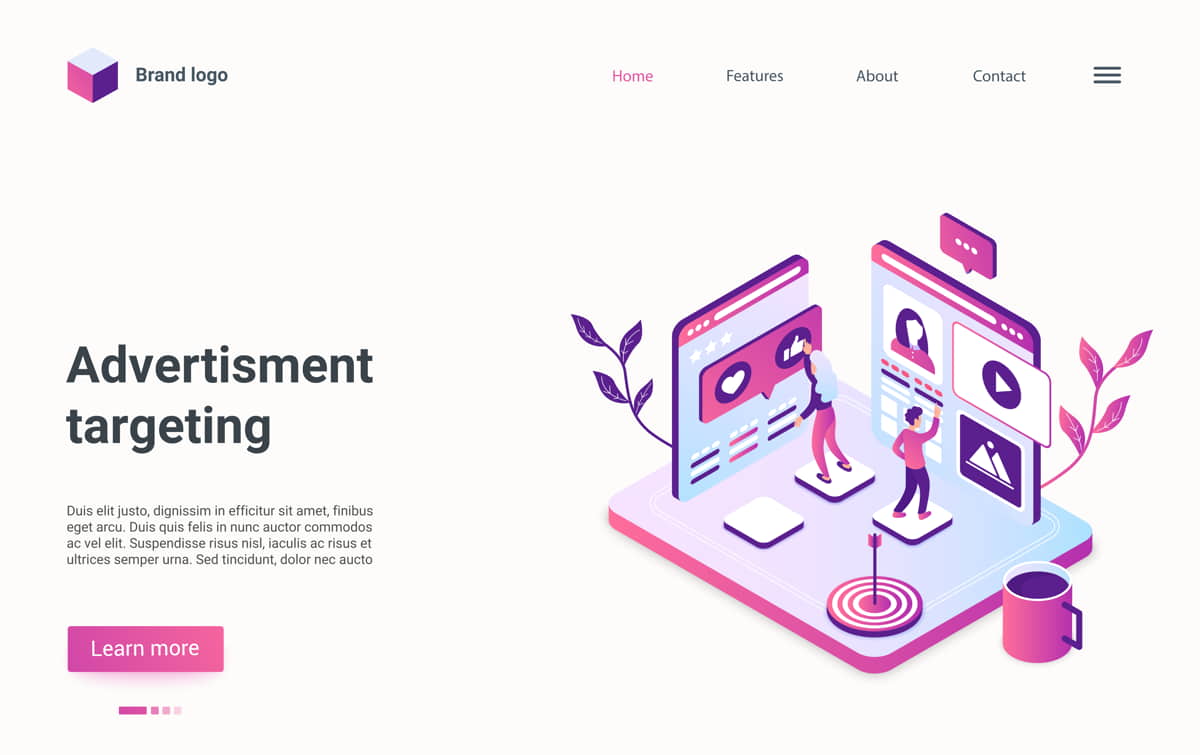ICON_PLACEHOLDEREstimated reading time: 16 minutes
The Internet is inundated with failed products and failed startups; especially from Nigeria and most of Africa. Nigeria, for example, has her fair share of failed businesses ranging from the most recent exit of GoMyWay, to the acquisition of Konga, Olx, Camplus, Showroom.ng and Some from other parts of Africa, like Wabona (2012 – 2015), Tress (2016 – 2018), Podozi (2014 – 2018) and a host of others.
A brief analysis, however, reveals that most of these businesses regardless of their brilliant business ideas failed due to common pitfalls. And surprisingly, nonetheless, about 80% of startups fail due to the same pitfalls.
As common as these pitfalls are, one would wonder why the pattern persists!
This article is a deep-dive into these pitfalls, with the lofty vision of helping startups fully understand them and how to best avoid them.
Contents
The Identified Startup Pitfalls Are:
- Poor Market Research
- Incorrect Pricing
- Customer Negligence
- Misalignment with Business Processes
- Fixing a Problem that doesn’t Exist
- Poor Product Quality
- Lack of Patience
- Weak Market Launch
- Delayed Market Entry
- Product Trends
- Marketing failure
So how do these pitfalls cause startups and products failure?
Many new innovative ideas and products of famous companies have been unable to survive after they launched. A significant reason is that they assume quickly, without any significant research, that their products will appeal to their customers.
Take the Edsel Ford automobile introduced into the market in 1957. Henry Ford’s company invested a large chunk of money and dedicated about ten years in developing this product. The plan was to create a line of flashy cars for the middle-class citizens, and they named it after his deceased son Edsel.
On the day of the launch, Henry Ford dubbed about 18 variations of the car, a stunt which no other car manufacturer has ever pulled in history. After the gimmicks and hypes about the vehicle’s awesomeness, a colossal disappointment shrouded the public’s eyes on launch day—a clear distinction between what they were expecting and what they got.
In 1980, the Edsel was pulled from the market, a bitter realisation that people preferred cheaper and less sophisticated brands than an ugly looking car with an unusual name.
Right from the car’s development and the details they focused on, the company had assumed the product would be a hit in the marketplace. But they thought wrong.

Harvard Business School asserts that 95% of the 30,000 new products (digital and physical) introduced every year fail. Every business will cringe at the slightest thought that their developed product will die, after the investments and the resources pumped in for the product’s success.
Table of contents
Reasons Why Products Fail
To launch a successful product that thrives well in the marketplace is quite tricky. Every business owner desires to establish a product that sells like hot cake. Still, when they ignore certain principles, their products are swiftly pulled out of the market. Many large business products that didn’t thrive well in the past flopped because of different factors that were in play. Looking back to Edsel Ford’s story, there were many reasons why the product failed. Although some people tried to blame appearance and features, there was more to it.
Generally speaking, certain factors determine the success or the failures of a product. These factors tend to differ among the kinds of products released but are all relatable.
So you have launched your latest food product into the market, and you were optimistic that the product was going into the market to solve breakfast problems among corporate workers. The odds were all in your favour the last time you checked. After its release, it was as if you threw it out on the streets to crash and burn. Here are some reasons why a product fails.
- Poor Market Research
- Incorrect Pricing
- Customer Negligence
- Misalignment with business processes
- Fixing a Problem that doesn’t exist
- Poor product quality
- Lack of patience
- Target Market
- Weak Market Launch
- Delayed market entry
Poor Market Research
One of the reasons why your idea stands a great chance at failure is because you assume too soon. You believe that since you think it’s viable, everyone else will have a similar emotional attachment to your product. Your product will remain irrelevant to your customers if they can’t find a use for it.
Market research is a determinant to the success of any product idea. Lack of proper market research and analysis can lead to loss of information necessary for the product’s success. Adequate market research helps the business to know and understand who their customers are and how the market works. It helps to give a detailed description of who your customers are and what their interests are. You also need to know about your competition, who they are, their position and strategies in the market. How do they acquire their clients and customers? What they are doing right and wrong.
Test launch or beta testing is another neglected aspect of market research. Launching beta versions of the product before the official launch date will help you understand what your customers think about your product. Test launches are vital because they guide you towards capturing the product loopholes. The feedback you get will be necessary for improving the product. But if your research fails to meet these requirements, then your product is at full speed to its doom.
The Ford Edsel practically had no prior test launch. The product was shipped sealed to the dealers because they wanted an element of surprise. It didn’t end well because the audience had no idea whatsoever about what they were expecting. They made the mistake of assuming everyone would love their product since they were a trusted brand; thus, they lost over $250 million. The management pulled the product out of the market 24 months after its launch. Market research is critical to the success of any product.
Incorrect Pricing
The money subject has always been prickly. Usually, in attempts at uniqueness and brand difference, companies will design products with many features. As a result, these companies record heightened costs because the cost margin of the products has increased. To recover all that the business invested during the development phase, these companies exaggerate their prices. This strategy sometimes works for trusted brands but doesn’t work for others. When customers disagree with this stance, they tend to move to other brands with similar products at a lower price.
A great fix to a pricing problem is to compare your competitor’s prices to know the range at which you should set yours. But it might become problematic if your product is new. There needs to be a pre-launch market test to understand what they stand to gain after purchasing your product.
Customer Negligence
Your customers are integral to your product success. Extricating your customers from the process of product development can be a reason why products fail. In the product marketing strategy, the customers play a vital role in determining how valuable your product will be. Although overdependence on the customer’s feedback can sometimes lead a business astray; it is necessary to listen to what customers say since they are the reason you created the product. Your product is only valuable to your customers based on what they define as value. You cannot solve their problems when you do not understand their pains. Knowing your customers helps give your products a unique feel because their pain points are made evident. It can guide you on learning how to improve the products to meet their specific needs. Your product generally is valuable to your customers at three levels:
- Because it interests them, that is it solves their immediate need.
- It cures their pain to an extent or on a longer-term or
- Like candy, they desire it as a basic necessity.
A great example is the Coca Cola Blak launch, a coke blend with a coffee after taste. The product was pulled out of the market shortly because they realised later that the customers preferred the old coke better.
Your customers might not have the rights to tell you what to produce, but it’s wise to let them input into the product you’re creating. It helps you to know how better your product can serve them.
Misalignment with Business Processes
Aligning your product to the vision of the company isn’t something you want to take for granted. The business world can be competitive. You might get swayed by the air of competition blowing from what others are doing, and then you want to create something eyes have not seen.
Your customer’s trust is not something to be taken on a light note. When your product derails from the original vision they are familiar with, it will bring about conflicting interests and a truckload of trust issues.
You might be on a shady slope of losing more loyal customers because they have no idea of what is happening. It might get difficult to win back their trust. For example, you are in the food and beverage sector, and then your new product tends towards developing an iPhone. Not only would you hack to pieces the trust of the working-class women and men, but it will give them a cause to doubt your potential.
Fixing a Problem that doesn’t Exist
The goal of every product is to create a solution. Your product loses relevance if the users or customers find it useless. Creating products and ideas can be very interesting. After your brainstorming sessions, your thoughts will probably sound like a million bucks. Deep down, you are sure that it will shut down the market and shoot sales into your bank account hoops when it’s launched. You probably have those earth-shattering ideas that could give you the chills by mere thinking about them. But the downside of this is when your customers don’t feel the same way.
Nobody will buy a product that does not resonate with their beliefs. When it doesn’t mean anything to them, it loses its value and usefulness, and soon they forget it. When Google launched its Glass product, it seemed like a significant technological break. But soon, the ridiculous pricing, design and privacy issues emerged. The public realised they did not need such a product. Gradually, they forgot that it ever existed.
Poor Product Quality
A product which has an inferior quality is sure to fail. The beauty and quality of the product are the first things customers see before settling for the benefits the product offers. When the branding and the quality of the product are not good enough, the product dies quicker than its lifespan.
Your clients in the fashion industry have a great knack for identifying fake designer bags and purses. If your product’s quality isn’t top-notch, your customers will drag your brand’s reputation into the mud.
Defects like this occur when companies set unrealistic time frames for the launch of their new products. During product development, the developers give all their attention and time to other product development parts. While they ignore, it’s usability and user experience. The managers dismiss all efforts to get to them with “we will do that later”.
When a customer senses the lack of quality in a product, they can also dissuade others from using your product and in the long run, affect the reputation of your brand and company. Hence, you should take the quality of your product seriously during the product’s developmental process.
Lack of Patience
Some companies desire to strike gold the first time they launch their ideas. The virtue of patience is best explained in details by Napoleon Hill in the Three Feet from Gold story in his book “Think and Grow Rich.” A man went in search of gold. He was motivated beyond doubt that his speculations were accurate, and he began to dig a piece of soil. He persisted until he found a shiny ore, he became excited at his breakthrough. He covered up the ground and retraced his steps back home to regroup with his friends. He acquired the right machinery and came prepared to mine gold. After a while into drilling, the vein of gold dwindled, and the gold was gone.
They scourged the ground frantically till they finally accepted their fate that they had jumped too soon into conclusion. The man sold his machinery at a measly amount to a junk man.
The junkman sought counsel from a soil engineer. When he scouted the area, he discovered fault lines in the mine. The engineer confirmed that the junkman would find the gold three feet from their present location. When the junkman got there, he found a million dollars of ore in the mine.
It takes patience to realise the potentials of your product. The agile businessman has no business for patience; all he wants to do is make it big overnight. Impatience has led companies to withdraw stellar products from the market and as a result, lost out on goldmines.
Weak Market Launch
Marketing plays significant roles in the success of a product. At every level of product development, there should be a great deal of marketing. Your customers and market need to know what you are up to and what they should expect in the process of development. It is no news that most companies feel the surprise element should be the centre of focus for a successful product launch. Others think marketing is an obscene word, “a great product will market itself” they say. They direct their efforts towards developing the product; thus, more products are stacked yearly in failure archives and have been why products fail.
Give your product a chance to succeed. To do this, it must have the AIDA support (awareness, interest, desire, action), which stems from continuous advertising and creative wit.
Delayed Market Entry
Even if patience is a virtue, withholding the product from entering the market is equal to brutally ending its lifespan. For example, a mobile phone company takes five years to produce a new phone for its customers. But a competitor releases a phone too with similar features in probably three years. The first phone company will lose its customer’s trust because people are anxious. When you’re not helping their anxiety, they will lose interest in your product and quench their stress with a competitor who promises them something similar and better. Now finding a new space to compete with your customers is near impossible.
How to Avoid the Pitfalls
Every business can avoid chances of pitfalls in their products. There is no doubt that every business owner dreads to fail. Every year, the statistics of failed products always beat the rates of successful outcomes. However, you can channel or embrace failure to test what ideas are viable. We are now in the agile transformation era where larger companies are beginning to adopt small business principles. The concept of failure isn’t a thing to dread because businesses can test ideas through the fail-fast culture. Despite the teaming advantages and benefits of the fail-fast culture, strategy proves to be a better option for ensuring a company’s product success. In product marketing strategy, companies and marketers pull together patience, perseverance and intuition to make things work. These are some strategies that can help your company or business stray from the pits of failure.
Ensuring a Product Market Fit
It is usually not always easy to locate the path of a product-market fit. Based on product marketing strategy, you have to carry out detailed market research, to know your customers. Check competitor’s sites for reviews to see what they are doing right. Then you’ll have to rely on some intuition, calculations, data and signals to predict what product will turn heads in the industry. This approach is messier than the fail-fast method because it requires careful planning and deductions about the next phases. Here are signs that your product tilts towards a flattering product-market fit.
- A massive positive reaction and reviews: When your product gets to the stage where the market is impressed, it results in many positive responses from the public. Despite the vast competition in the mobile phones industry, the positive feedback about the iPhone still skyrockets.
- Monetisation too can be proof that your product has gained a product-market fit. Not all products have the potential to be monetised right from day one. Some people believe that focusing on monetisation will inhibit growth. However, if your product tends towards generating revenue for you, it means it is on the path of success.
Carry Out Sufficient Market Research
There is a difference between learning what your customers want and listening to them say what they want. In market research, you must collect data from your target market, your customers and your competition. Detailed analysis is usually required to find out more about your customer’s buyer persona and traits to inform you about who they are. However, a significant part of the market research often ignored is the non-customer avatar.
Always focusing on your customer’s feedback and reviews will inhibit your creativity. After identifying who your usual customers are, try ignoring their input and changing your approach by putting your product before your non-customers. This time, you’re trying to shift focus from the people you are used to because you are trying to explore newer clients. Here are specific questions that you can answer when carrying out this market research.
- Who are the customers not using your products? Provide justifiable reasons.
- Identify what customers have thought about your service and declined it, and why have they done this? Explore ways to solve the problem.
- Who are those customers who have not gotten to know about your product and have high chances of considering your product?
Finding solutions to these questions gives you a more comprehensive view of who your market is. There is no harm in sailing your boat on more expansive waters to get the public’s idea to shape your creativity.
Combat False Claims And Preventing Bad Reviews
Sometimes, products fail because companies make outrageous claims that their products can do the impossible. Eventually, when the market is swayed and convinced to purchase these products, it leads to bad reviews and possible customer withdrawal. When you aren’t sure about your products’ capabilities, refrain from making assumptions because your company’s future or reputation is always on the line.
Since the strategy is vital at this phase, it is pertinent to consider that the product passes through beta testing to inform its capabilities. The Edsel failed to accommodate this into their strategy and planning. Hence, even if they had spent a fortune trying to make the car and secure different features to work in the car, it still flopped.
Define Failure
Your failures are non-existent if you do not know what they are. You cannot decipher the degree of loss of your product if you haven’t defined it. To measure the level of failure, you should understand it from the standpoint of your company’s goals and vision. Your product fails if it does not meet the positioning of the company.
There are two types of failures recognised; reversible failures and irreversible failures.
- Reversible failures: This occurs when the company can identify the root of the problem. Here, the company still has the financial capacity to help it renew.
- Irreversible failures: This occurs when the company is bankrupt, or the competition has shrunk its opportunities, and there is no hope for its survival.
Differentiating between failures is quite challenging and is worse if there’s no prior definition of failure.
READ: FOUR ESSENTIAL TIPS ON SALES AND MARKETING
Final Words
An underlying factor to why products fail is because many businesses are afraid to fold. Since failure is inevitable, there’s no need to stall. Due to the improvement in technology, product development has become less complicated. It is easier to carry out research using digital tools, google forms and surveys to know what customers need. Carry out extensive marketing because your products might have failed because they were chiefly in the faces of people who didn’t need them. Increase your scope, connect the dots and sail on expanse waters, then launch your product.
























